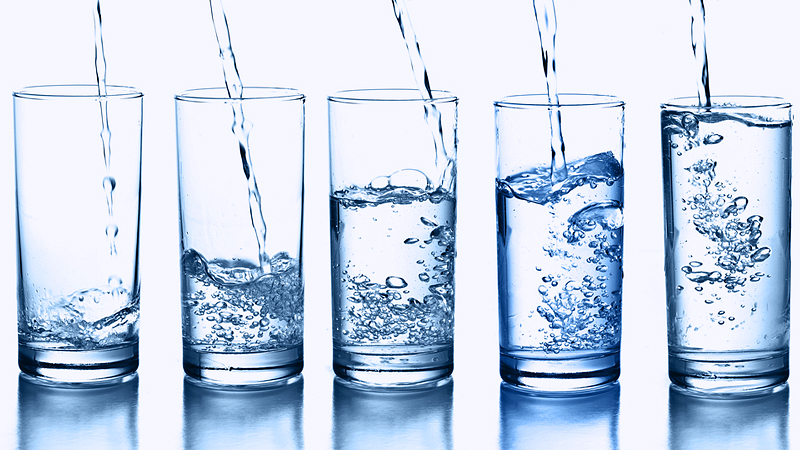Think you’re hungry, have a big glass of water, and wait 20 minutes before snacking or eating, because very often we confuse thirst with hunger.
Having a routine of eating and drinking can help maintain a healthy lifestyle. Unfortunately, many people mistake thirst for hunger which can lead to overconsumption of food.
When we become thirsty, our bodies signal us to hydrate, but we may not pay attention to that signal and instead eat when we should be drinking water.
To avoid this mistake, it is important to drink water regularly and pay attention to thirst signals. By doing this, we can make sure to nourish our bodies properly and not confuse thirst for hunger.
How to Tell the Difference Between Thirst and Hunger – A Guide for Busy People
Do you sometimes find yourself confused when it comes to whether you are truly hungry or if it is just thirst? If you are a busy person, it can be difficult to recognize the difference between hunger and thirst.
Fortunately, there are some simple steps you can take to tell the difference between the two.
First, take a few moments to assess how you are feeling. If you are feeling lightheaded or dizzy, it could be a sign that you are dehydrated and in need of some liquid refreshment.
If this is the case, grab a glass of water and chug it down quickly. It may not be hunger, but simple thirst.
Next, check your stomach to see if it’s grumbling or in pain. If your stomach does not hurt and there is no desire to eat, you may just be thirsty. This is especially true if you feel like you are just craving something cold and refreshing.
Finally, many people find that if they drink a glass of water, their desire to snack goes away. This is a good way to tell the difference between thirst and hunger. If drinking the glass of water has taken care of your need for food, you probably were just thirsty.
To avoid confusing thirst with hunger in the future, it’s important to drink plenty of water throughout the day.
Staying hydrated is key and will help keep your body feeling satiated, even when it isn’t hungry. That way, you can avoid wasted calories and better manage your health and wellness.
By following these simple steps, you can judiciously assess whether you are really hungry or just thirsty. This can save you time and money in the long run and help you make smarter dietary choices.
Hydrating Tips: Why You Should Drink Water Regularly and Not Misinterpret Your Thirst as Hunger
It is very common for many people to misinterpret the sensation of thirst for hunger. In this case, instead of needing to satiate thirst, they end up eating something to satisfy the hunger craving.
Believe it or not, the human body is about 70% water and it’s important to drink enough water to stay hydrated and healthy.
Drinking water more often can help control the sensations of thirst and hunger, removing the temptation to grab something to eat when you are thirsty.
Here are some tips to help you drink more water regularly and avoid mistaking thirst for hunger:
1. Carry a water bottle with you, especially if you’re often on the go so that you can stay hydrated even when you’re busy.
2. Remind yourself to drink water every few hours. Set your alarm to remind yourself or you can even add a cup of water as an item to your to-do list.
3. When you crave something to eat, have a glass of water first and see if the feeling goes away.
4. Add some flavor to your water with sliced cucumber, lemon, or other healthy ingredients.
5. Drink a glass of warm water in the morning to kick-start your day and help digestion.
6. Try to drink water with each meal.
7. Make sure to drink more water when you’re exercising, and after your workout.
By following these simple tips, you can easily drink more water and stay hydrated, promoting healthy digestion and avoiding mistaking thirst for hunger. So, start drinking enough water today and you’ll soon find the difference it can make.
The Benefits of Quenching Thirst Before Eating: How to Achieve Better Portion Control
When it comes to weight management, controlling portions is vital. Going overboard when eating can lead to wide-ranging health issues such as heart disease, diabetes, and stroke.
One strategy that’s often overlooked is quenching thirst before eating. This simple strategy can help with portion control and overall health.
A hunger-thirst mechanism is an incredible tool in the world of weight management. When the body feels hungry, it’s likely dehydrated and craving salt.
Quenching thirst before eating can help to identify when we’re truly hungry and adjust portion sizes accordingly.
According to research, it can take up to 20 minutes for the brain to register that the body is quenched, providing extra time to make adjustments and prevent overeating.
Dehydration is also linked to undesirable cravings and snacking between meals. By drinking water regularly throughout the day and especially before meals, it’s possible to quench thirst before it develops into hunger. The idea is to stay hydrated and keep cravings at bay.
Finally, the benefits of quenching thirst are apparent in blood sugar maintenance. Dehydration slows the digestion process, resulting in a major spike in blood sugar levels.
Drinking water before meals helps to regulate the intake of food and keeps blood sugar levels in check. It’s a great way to support weight management for those with diabetes or prediabetic tendencies.
Overall, drinking water is a powerful tool for managing portions and promoting health. Quenching thirst may seem like a no-brainer but it’s an easy action to overlook.
Being intentional about hydration goes a long way in the pursuit of health. So before chowing down, be sure to quench your thirst for hunger.
Is It Thirst or Hunger? Understanding Hunger Cues and Making Healthy Choices
When it’s time to eat, do you figure out if you’re hungry or just thirsty? We’ve all experienced the sensation of being hungry when, in reality, all we needed was a glass of water.
It’s often difficult to decipher true hunger cues and harder still to make the best choices for our health.
Understanding what your body is telling you and learning how to differentiate between hunger and thirst is essential for making healthy decisions.
To start, let’s discuss what each of these feelings means and how to recognize them. Hunger is caused by low blood sugar and is characterized by an empty feeling in your stomach, lightheadedness, and irritability.
Thirst, on the other hand, is caused by inadequate hydration and is characterized by dry throat and mouth, fatigue, confusion, and headaches.
So, how can you tell the difference between thirsty and hungry?
Here are a few strategies you can use to make sure you’re responding to your body’s calls.
1. First and foremost, always keep yourself hydrated by drinking two liters of water per day. Water helps your body break down food and facilitates digestion.
2. Before eating, drink a glass of water. Our brains often trick us into imagining we are hungry when we simply need hydration.
3. If the feeling you have lasts more than five minutes, it could be true hunger.
4. If your stomach is growling and your low-energy dehydration feeling subsides after you drink water, you are most likely experiencing thirst instead of hunger.
5. Eat mostly healthy snacks such as fruits and vegetables to keep hunger at bay throughout the day. This helps prevent overeating and excessive consumption of unhealthy foods.
By understanding the difference between hunger and thirst, you are well on your way to making healthy choices.
Don’t forget to drink water regularly and determine if you’re actually hungry or just experiencing thirst before having a snack.
Frequently Asked Questions
1. What are some of the common physical signs of true hunger?
Some common physical signs of true hunger include feelings of emptiness or growling in the stomach, fatigue, headaches, lightheadedness, increased need for sleep, increased thirst, and cravings for specific foods.
Drinking water regularly is also a good way to tell if your body is truly hungry as thirst can easily be misinterpreted as hunger.
2. What are some strategies to distinguish between hunger and thirst?
Some strategies to distinguish between hunger and thirst involve paying close attention to the individual’s body and the sensations that it produces.
One way to do this is to drink a glass of water, and note the sensations in the body which follow.
If the individual feels quenched or relieved, then they were likely feeling thirst and not hunger. Another strategy can be to eat a small snack to observe how the individual’s body responds.
If they are still feeling the same sensation afterward, then it is likely thirst they are feeling. Furthermore, drinking water regularly throughout the day can help to prevent confusion between the two sensations.
3. How often should you be drinking water each day to ensure your hydration levels remain balanced?
It is recommended that you drink 8-10 8-ounce glasses of water per day to ensure your hydration levels remain balanced.
Additionally, it is important to listen to your body’s signals of thirst and not confuse them with hunger. Try to drink water regularly throughout the day instead of having a large amount at one time.
Conclusion
Not mistaking thirst for hunger is an important part of maintaining a balanced diet. When we first experience hunger, our bodies may be telling us that we are thirsty.
We need to listen to our bodies and recognize the signs. To maintain a healthy diet and lifestyle, we should be conscious of not mistaking thirst for hunger.
Additionally, it is important to stay hydrated, drinking water regularly throughout the day. By doing this, we are less likely to fall into the trap of mistaking thirst for hunger.
When in doubt, drink a glass of water. Our bodies, and our diets, will thank us for it!




